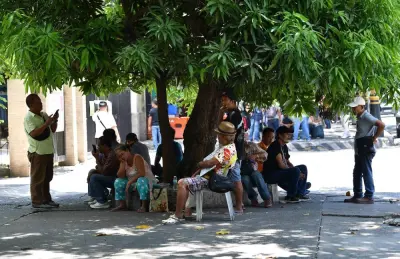The number of people killed in floods in Kenya due to heavier than usual rainfall since the monsoon began in March has risen to 70, with nearly half the deaths in Nairobi, the government said on Friday.Kenya and other countries in East Africa – a region highly vulnerable to climate change – have been pounded by severe downpours in recent weeks, compounded by the El Nino weather pattern.El Nino is a naturally occurring climate pattern typically associated with increased heat worldwide, leading to drought in some parts of the world and heavy rains elsewhere.“The official tally of fellow Kenyans who regrettably have lost their lives due to the flooding situation now stands at 70 lives,” government spokesman Isaac Mwaura said on X, after torrential rains killed 32 people in the capital Nairobi this week.Fifteen people were killed in the Rift Valley region, the government said in a report on Friday, following a meeting of the country’s disaster response committee.More than 120,000 people have been displaced by the floods, the report said, with 22 others injured and eight reported missing.The government has proposed 3.3bn Kenyan shillings ($24.5mn) for an “initial emergency response”, which includes repairing infrastructure, emergency housing and food assistance.Sixty-four public schools in Nairobi – nearly a third of the total number in the capital – have been “substantially affected” by the flooding, Belio Kipsang, the principal secretary for education, said on Friday.However, Deputy President Rigathi Gachagua said: “The schools will reopen as scheduled”, following mid-term holidays this month.In Makueni County, south of Nairobi, “a lorry ferrying people was swept away by raging waters”, the Kenya Red Cross said on X, adding that 11 individuals had been rescued.Kenyans have been warned to stay on alert, with more heavy rains forecast across the country in coming days as the monsoon batters East Africa.At least 155 people have died in neighbouring Tanzania due to flooding and landslides.Tanzanian Prime Minister Kassim Majaliwa said on Thursday that more than 200,000 people had been affected by the disaster.He said homes, property, crops and infrastructure including roads, bridges, railways and schools had been damaged or destroyed.In Burundi, one of the poorest countries on the planet, around 96,000 people have been displaced by months of relentless rains, the United Nations and the government said this month.Meanwhile, the UN humanitarian response agency, OCHA, said in an update this week that in Somalia, the seasonal Gu rains from April to June are intensifying, with flash floods reported since April 19.It said four people had been reportedly killed and more than 800 people affected or displaced nationwide.Uganda has also suffered heavy storms that have caused riverbanks to burst, with two fatalities confirmed and several hundred villagers displaced.Late last year, more than 300 people died in torrential rains and floods in Kenya, Somalia and Ethiopia, just as the region was trying to recover from its worst drought in four decades that left millions of people hungry.From October 1997 to January 1998, massive flooding caused more than 6,000 deaths in five countries in the region.The UN’s World Meteorological Organisation (WMO) said in March that the latest El Nino is one of the five strongest ever recorded, adding its impact would continue by fuelling heat trapped in the atmosphere by greenhouse gases.
Friday, April 26, 2024
|
Daily Newspaper published by GPPC Doha, Qatar.




















